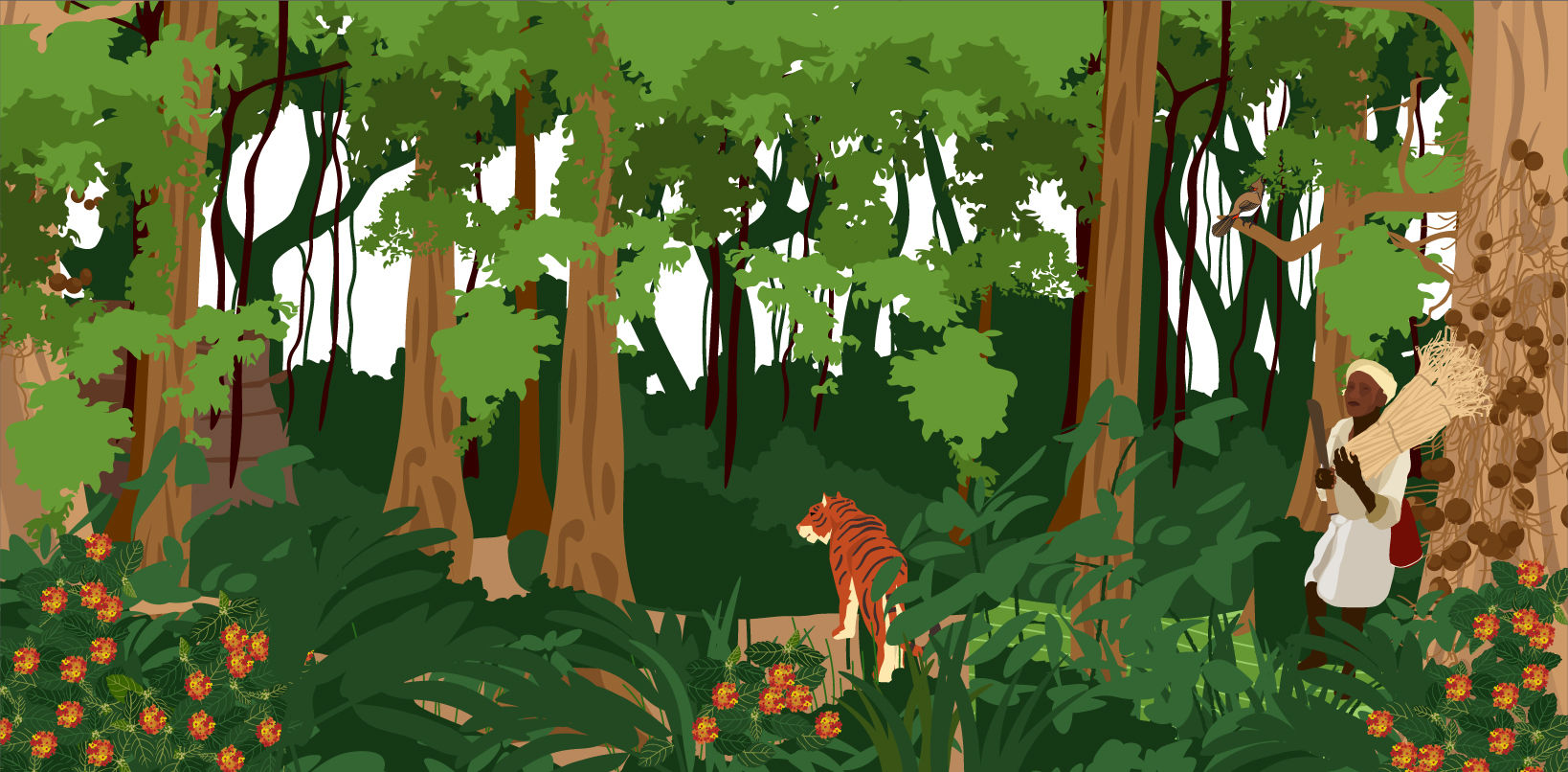
Restoration
How do we restore native vegetation after Lantana removal?
-
Finding a cost-efficient and scalable approach to restoration is vital, yet challenging on account of the site-specificity and complex nature of restoration.
-
Traditional restoration relies largely on tree planting, which is not feasible for areas with dense Lantana. Post removal, the newly planted saplings are the only palatable vegetation in the area and are heavily browsed by wild herbivores, with survival rates less than 5%.
-
Bringing back a cover of grass is perhaps a more promising approach – grasses generally outcompete shrubs, while trees will generally be outcompeted by shrubs.
-
Quickly bringing back the grass understorey will close the ground, and prevent other invasives and Lantana from re-establishing right away. More diverse species-complexes will emerge over time, through natural regeneration.
-
Indigenous knowledge of the Soligas (BR Hills) and the Kattunayakan (Nilgiris) both point to cool season burning as a vital and long standing management in tool in bringing back the grassy understorey to these forests.
-
But there is remains a huge policy block, in that widespread burning as a management tool is not allowed in most South Indian Forests.
-
A multi-institution robust scientific experiment is now underway to examine the efficacy of fire as a cost effective grass restoration tool in BRT.
-
More work along these lines is vital – to preserve the indigenous knowledge systems around controlled early-season burning to re-establish the grassy understorey in South Indian Forests.
We have been working on a collaborative restoration project with WWF-India, ATREE and NCBS in Biligiri Rangaswamy Temple Tiger Reserve (BRT) to regenerate native vegetation after lantana removal.


Aerial views of plot before Lantana removal

Soliga elders educating us on the ideal conditions for a cool season burn.